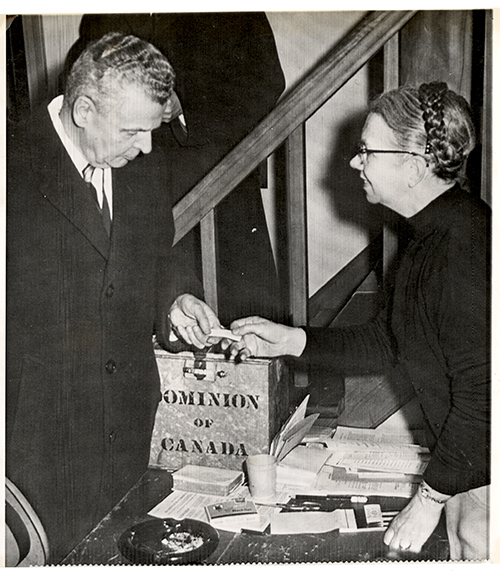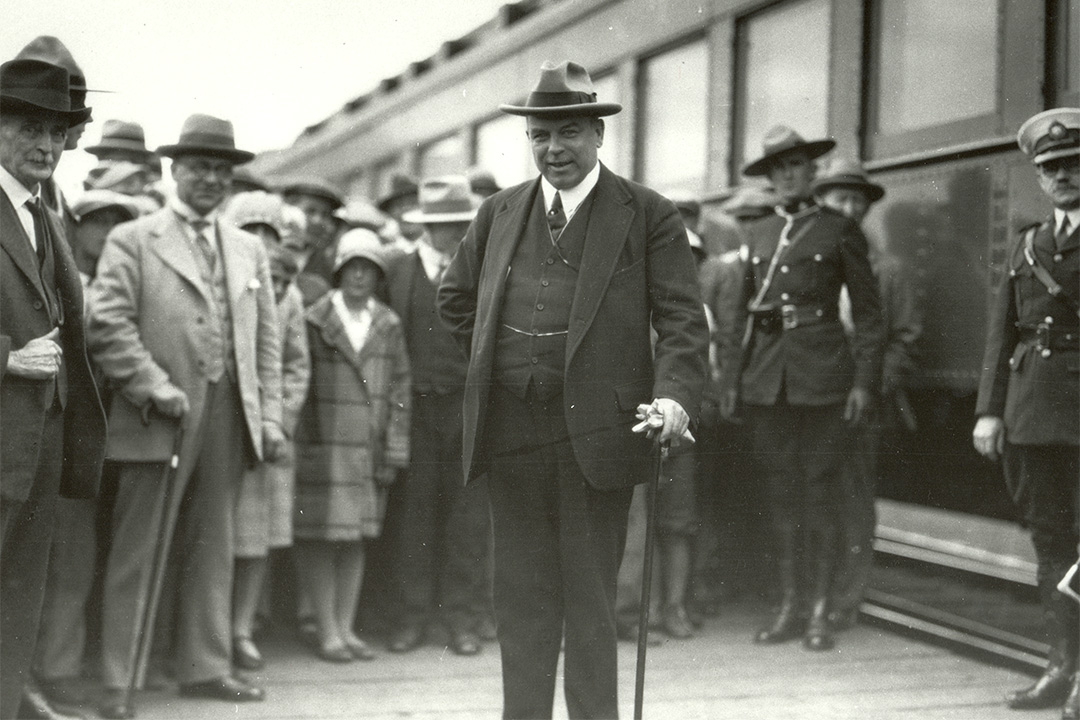“The show presents unique features of Saskatchewan and Canadian political history,” said Courtney, a senior policy fellow in the Johnson-Shoyama Graduate School of Public Policy at the University of Saskatchewan, who donated an array of paraphernalia from his personal collection to UASC. Much of his collection was obtained while researching party conventions as far back as Robert Stanfield’s Progressive Conservative leadership bid in 1967.
Courtney cites several items on display as highlights, from an autograph book dating back to Confederation (notable signatures include Sir John A. Macdonald and Queen Elizabeth) and a ballot box from Canada’s introduction of the secret ballot in 1874.
But the most unique feature of Saskatchewan’s political history? It’s the recognition of Prince Albert’s role in forging Canada’s leadership across generations.
Elections, Parties and Leaders commemorates the constituency of Prince Albert having the special distinction of being the only riding in Canada to have elected three different prime ministers.
Sir Wilfrid Laurier was elected in 1896 in a district called Saskatchewan, N.W.T., which included Prince Albert. Laurier soon resigned that seat, as he had also been elected in the district of Quebec East. Until the early 20th century, it was possible for run simultaneously in two ridings in the same election.
William Lyon Mackenzie King was first elected Member of Parliament from Prince Albert in a byelection in early 1926. He was subsequently re-elected there in the general elections of 1926, 1930, 1935 and 1940, but was defeated in 1945.

John G. Diefenbaker was first elected in the Prince Albert constituency in 1953. He was re-elected in that riding in the next nine elections: 1957, 1958, 1962, 1963, 1965, 1968, 1972, 1974 and 1979.
Courtney acknowledges that P.A.’s historical distinction was borne of partisan campaign strategies and highlights the ever-changing nature of voter preferences and electoral alliances.
“It was a safe Liberal seat,” he said, referring to Laurier and King. “And for Diefenbaker, it became a safe Conservative seat.”
In addition to Courtney’s contributions, the exhibit incorporates items from UASC, the University Library and the Diefenbaker Collection. Aside from the space he freed up at home and in his office by donating approximately 100 boxes of research and teaching materials, Courtney’s motivation for providing his precious mementos to UASC to display is to continue to tell Canada’s story.
“That’s what archives are for,” he said. “To preserve our history.”
Elections, Parties and Leaders will be on display until the end of June in the Murray Library.
